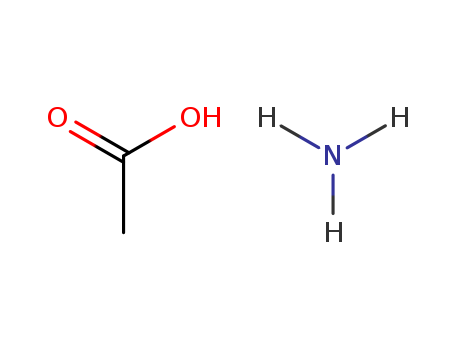10.1021/ol800115p
The research described in the article focuses on the synthesis of chiral 3,3'-bipyrroles, which are significant for their presence in natural products and potential applications in conducting polymers and pharmaceuticals. The experiments involved a Lewis acid-catalyzed one-pot, three-component route using diaroyl acetylene and 1,3-dicarbonyls as reactants, with ammonium acetate serving as the nitrogen source. The reaction was optimized using various Lewis acid catalysts, with In(OTf)3 and InCl3 proving most effective, and isopropyl alcohol (IPA) as the preferred solvent. The axial chirality of the bipyrroles was confirmed through X-ray crystal structure analysis and Density Functional Theory (DFT) calculations. The absolute configuration of the enantiomers was determined by comparing theoretical CD spectra calculations using the ZINDO method with experimental CD spectra obtained after separating the racemates on a chiral column. The research also explored the atropisomerism of bipyrroles and their potential applications, suggesting further studies for their use as chiral ligands and in electrochemical sensing.
10.14233/ajchem.2017.20199
The research focuses on the multicomponent one-pot synthesis and characterization of novel 4-furyl-1,4-dihydropyridines, which are compounds with significant pharmacological properties, including calcium channel blocking activities. The experiments involved the reaction of 5-arylfuran-2-carbaldehydes with ethyl acetoacetate and ammonium acetate in refluxing ethanol to yield the desired arylated products. The synthesized dihydropyridines were characterized using various analytical techniques such as elemental analysis, Fourier-transform infrared spectroscopy (FTIR), proton and carbon nuclear magnetic resonance (1H NMR and 13C NMR), and mass spectrometry. These analyses confirmed the structure and composition of the compounds, which were found to have potential applications in the field of pharmaceuticals.
10.1007/s00044-017-1903-0
The study investigates the impact of replacing the triazole ring with pyrazole or imidazole rings on the physicochemical properties of a click-based lead compound, A1, which was a selective inhibitor against VEGFR2. The researchers synthesized eight new derivatives and identified pyrazole derivative B2 as a promising new lead. B2 maintained A1's in vitro activity, with improved solubility at pH 2.0 and pH 7.4, and a log D value suggesting potential for further modification to enhance intestinal solubility. The study concludes that the triazole/diazole replacement can optimize the physicochemical properties of click-based lead compounds, highlighting B2's potential for drug development.
10.1021/ol060045q
The study presents a Pd/C-catalyzed method for the deoxygenation of phenolic hydroxyl groups in phenol derivatives, converting them into aryl triflates or mesylates using magnesium metal in methanol (MeOH) at room temperature. The key innovation is the use of ammonium acetate (NH4OAc) as an additive, which significantly enhances the reaction's reactivity and rate. This approach is environmentally friendly, widely applicable, and operates under mild conditions without the need for a phosphine ligand or hydrogen gas. The method is effective for a variety of aryl triflates and mesylates, offering a practical and efficient route for deoxygenation in synthetic organic chemistry. The researchers also explored the reaction mechanism, suggesting that it involves an initial single electron transfer (SET) from magnesium to the palladium-activated aromatic ring, leading to the formation of an anion radical that subsequently eliminates the (trifluoro)methane sulfonic anion to produce the reduced arene product.
10.1021/acs.joc.7b01516
The research focuses on the copper-catalyzed oxidative coupling of β-keto esters with N-methylamides to synthesize symmetrical 2,3,5,6-tetrasubstituted pyridines through a formal [2+2+1+1] cycloaddition. The process involves a domino sequence of cross-dehydrogenative coupling (CDC), C-N cleavage, Michael addition, condensation, and oxidative aromatization, constructing multiple C-C and C-N bonds in a single pot. The study utilized a variety of reactants, including different β-keto esters and N-methylamides, with ammonium acetate serving as the nitrogen source and tert-butyl hydroperoxide (TBHP) as the oxidant. The copper catalyst, specifically Cu2O, was optimized through various experiments to achieve the best yield of the desired pyridine products. Analyses such as NMR spectroscopy, GC-MS, HRMS, IR spectroscopy, and UV spectroscopy were employed to characterize the synthesized compounds and confirm the structure and purity of the products. Preliminary mechanistic studies, including kinetics isotope effect (KIE) and D-labeling experiments, suggested that the C(sp3)-H bond cleavage of N-methylamides was the rate-determining step and that the pyridine C-4 framework was derived from N-methylamides.
10.1039/c5ra03241e
The research focuses on the synthesis of 1,2,4,5-tetrasubstituted imidazoles, which are compounds with significant pharmacological properties and roles in biochemical processes. The study introduces a novel nanostructured molten salt catalyst, 2,6-dimethylpyridinium trinitromethanide {[2,6-DMPyH]C(NO2)3}, and utilizes it to catalyze the one-pot four-component condensation reaction of benzil/benzoin, aldehydes, amine derivatives, and ammonium acetate under solvent-free conditions at room temperature. The purpose of this method is to provide an effective, cost-efficient, and environmentally friendly approach to synthesizing these imidazole derivatives, aligning with green chemistry principles. The conclusions drawn from the research highlight the high yield, short reaction times, and reusability of the catalyst, which was fully characterized by various analytical techniques. The process demonstrates a significant advancement in the synthesis of imidazoles, showcasing the catalyst's efficiency and the reaction's compatibility with green chemistry practices.



 T
T
 F:Highly flammable;
F:Highly flammable;

